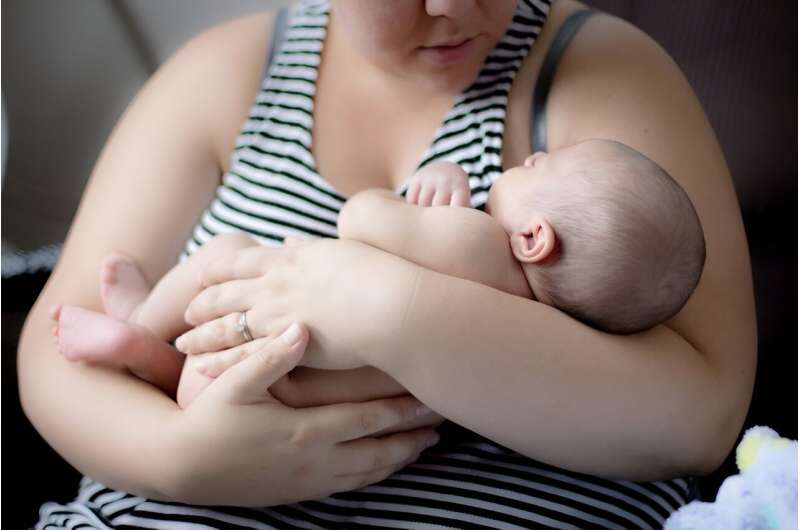Research lays the groundwork for a lifesaving group B strep vaccine


One in five pregnant women carry Streptococcus agalactiae (group B strep or GBS) in the vaginal tract, which is typically harmless—except when it isn’t.
The bacterial infection poses serious and even fatal consequences for newborns, including pneumonia, sepsis, and meningitis, which can have long-term effects on the child’s cognitive function.
Researchers from Binghamton University’s Biofilm Research Center and the School of Pharmacy and Pharmaceutical Sciences (SOPPS) are unraveling the workings of GBS infections, which could someday lead to a vaccine. Their article, “In silico and experimental analysis of the repeated domains in BvaP, a protein important for GBS vaginal colonization,” was recently published in Infection and Immunity.
“This research has identified and characterized a novel protein that could serve as a vaccine candidate to fight a bacterium that impacts women’s reproductive health and neonatal outcomes,” said first author Lamar Thomas, Ph.D. ’23, now a postdoctoral fellow at the University of California, San Diego, in the Department of Pediatrics. “I hope this work will inspire others to explore other novel proteins and microbial agents that may potentially aid in improving global health.”
When most people think of “strep,” they have in mind Streptococcus pyogenes—group A strep or GAS, which causes strep throat and necrotizing fasciitis, a “flesh-eating” infection, explained Assistant Professor of Biological Sciences Laura Cook, a co-author-of-the-paper along with Nicholas Faiola of the Biofilm Research Center and Emily Canessa and Yetrib Hathout of SOPPS.
“There are many other pathogenic species of Streptococcus as well, including GBS and Streptococcus pneumoniae, which also causes many diseases, especially in the elderly,” she said.
GBS can pass from mother to child in utero, potentially causing preterm birth or after birth via close contact like breastfeeding, but these infections are rare. Most commonly, the infection is transmitted from mother to child during the birthing process, likely due to the aspiration of contaminated bodily fluids.
Because of the risks, pregnant women in the United States are tested during their last trimester and treated with antibiotics if they are found to be positive. While antibiotics have decreased the rates of neonatal GBS disease in developed countries, the World Health Organization has placed a high priority on developing a vaccine.
To successfully colonize, the bacteria create a biofilm that allows them to stick to each other and the human host. Key to that biofilm is a protein known as BvaP, which Cook’s lab established in previously published research.
Blocking surface proteins such as BvaP could be key to developing a successful vaccine, protecting newborns from infection. Cook’s lab is now looking at the regulation of this protein, how this affects its function, and how it may interact with other GBS proteins and the host.
“Even if BvaP does not prove to be a viable vaccine candidate, the process of host colonization is essential to understand for developing treatment strategies against bacterial pathogens,” Cook said.
More information:
Lamar S. Thomas et al, In silico and experimental analysis of the repeated domains in BvaP, a protein important for GBS vaginal colonization, Infection and Immunity (2023). DOI: 10.1128/iai.00387-23
Journal information:
Infection and Immunity
Source: Read Full Article